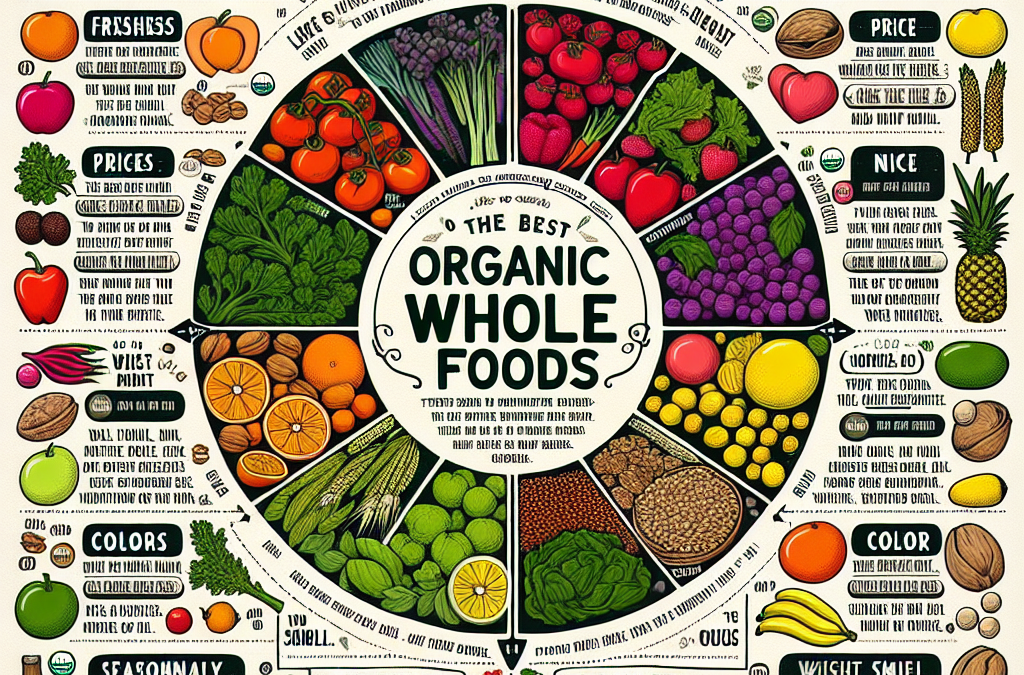Understanding Organic Labels
Types of Organic Certifications
When I first started shopping for organic foods, I was completely overwhelmed by the different labels out there. It’s not just “organic” or “not organic”; there’s a whole spectrum! You’ve got USDA Organic, which is a biggie, ensuring that at least 95% of the ingredients come from organic farms. Then there’s the “Made with Organic Ingredients” label, which is less strict and only requires 70% organic ingredients. Knowing these distinctions helps so much when I’m picking out my groceries.
Then there’s “100% Organic,” which means all ingredients are organic, and let me tell you, that’s the gold standard. But you gotta keep an eye out because some brands can try to pull a fast one by cleverly worded labels that might not mean what you’d think they do!
As I learned more about these certifications, I started feeling more confident when I picked up items. It gives me peace of mind to know that I’m not just throwing my money away but investing in food that’s been produced under strict guidelines.
Freshness and Quality
Checking for Freshness
Freshness isn’t just a bonus; it’s a requirement in the world of whole foods! Whenever I’m at the store, I always look at the produce sections first. The fruits and veggies should look vibrant and free from blemishes. If they look tired or wilted, I steer clear. It’s kind of like shopping for clothes; you want to pick the freshest and best-looking pieces on the rack!
Another tip I picked up is to smell the produce! A fresh apple should have a delightful scent, and if it doesn’t, it might not be the freshest pick. When you get home, you’ll want that freshness to translate into your meals, and I can tell you, stale produce just doesn’t cut it.
I also try to go for seasonal items. They are usually fresher because they haven’t traveled as far, and they tend to be cheaper too! It’s a win-win, really!
Shopping Local
The Benefits of Local Markets
Shopping at local farmer’s markets has totally transformed my organic grocery game. Not only are you often getting fresher produce, but you’re also supporting local farmers and the community. I love getting to chat with the growers directly! They usually share great tips on how to cook with their products or how to store them for long-lasting freshness.
Plus, local markets often have organic options that you might not find in a big grocery store. It’s like stepping into a treasure chest of delicious, fresh foods wrapped up in a supportive atmosphere. I mean, who doesn’t love finding those hidden gems!
And let’s face it, it feels great to know where your food comes from! It just makes the eating experience so much more meaningful. Knowing I’m putting money into the hands of my community instead of a corporate giant? Yes, please!
Understanding Seasonality
Eating with the Seasons
This one took me a while to grasp, but once I did, it completely revolutionized my approach to cooking. Eating seasonally means that you’re consuming fruits and veggies when they’re naturally at their best. For example, summer brings incredible tomatoes and berries, while fall is perfect for squash and apples. Each season has its own unique flavors!
Get an Amazing Discount on the Best Certified Organic Whole Food Supplement!
What I’ve noticed is that when I embrace seasonality, I can explore new recipes fueled by what’s freshest. Not only do these foods taste better, but they are often cheaper because they don’t have to be shipped from far away. Plus, they’re more nutritious since they’re harvested at their peak!
So next time you step into the produce aisle, think about what’s in season. Your palate (and your wallet) will thank you. I’m all about those seasonal delights!
Storing Organic Foods Properly
Best Practices for Storage
Alright, you’ve got your organic goodies home, now what? Storing them right is super important to keep them fresh! I’ve made the mistake of throwing everything in the fridge, but that’s not always the best option. For instance, tomatoes prefer to be kept at room temperature! They end up tasting way better that way.
Leafy greens are a whole different story — they should be stored in breathable bags to maintain moisture without drowning them. I’ve found that a simple paper towel in the bag can work wonders, too. Who knew I could be so savvy with my greens?
By understanding how to store my organic foods properly, I waste so much less. Plus, being able to pull out vibrant veggies from my fridge weeks later is a solid win. It makes meal prep feel less like a chore and more like a fun culinary adventure!
FAQ
What does USDA Organic mean?
USDA Organic means that the food is certified by the United States Department of Agriculture, ensuring it contains at least 95% organic ingredients, produced without synthetic fertilizers, pesticides, or genetic modifications.
How can I tell if produce is fresh?
Fresh produce typically looks vibrant and free from blemishes. Additionally, give it a good sniff! If it has a lovely aroma, that’s a great sign of freshness.
What are the benefits of shopping at local markets?
Shopping locally provides you with fresher produce, supports your community and local farmers, and often gives you access to organic options that aren’t available in big grocery stores.
Why is eating seasonally important?
Eating seasonally means consuming fruits and veggies at their peak period of freshness, which enhances flavor, encourages a diverse diet, and often leads to lower prices since they don’t require long-distance shipping.
How can I store organic foods to keep them fresh?
Different foods require different storage methods! For example, keep tomatoes at room temperature, store leafy greens in breathable bags, and know that some vegetables prefer the coolness of the fridge. A little research goes a long way!




